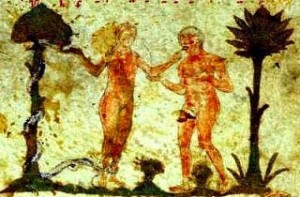
Arquivo para May, 2017
TOM TOM go Brasil
The Tom Tom GPS is already famous all over Brazil, and already had  a version for many countries around the world now, now has come Tom Tom Go Brazil, at least for now free and better than Waze, because it works even if your phone is off -line and update all maps online without needing that: “update and gps”.
a version for many countries around the world now, now has come Tom Tom Go Brazil, at least for now free and better than Waze, because it works even if your phone is off -line and update all maps online without needing that: “update and gps”.
The application already works for Androids devices and is promising soon for brazilian HiPhones, and enters a direct competition with Waze, the popular application for transit here.
The driver can check the traffic conditions on various routes; know where speed radar in many cases identifying mobile speed radars, such as maximum speed of the route, but the most interesting option to download several diverse maps.
Although this is interesting, it gives some balls, for example, Ceará is in the Northeast region, but it is pointed as North, so to download make sure for sure in which region is according to Tom Tom.
It has interesting services like telling friends the arrival time, it will calculate and redo the schedule according to the traffic and stops, ideal for caronistas and people who love to stop for the snack.
Until July 13 (because of this date), the “Get Tom Tom GPS Navigation ‘application can be downloaded for free, after this date it will cost $ 1, about 3 brazilian reais.
The bad news is that after the testing period, the user has to pay US $ 15 a year to use the licenses of the maps, or it will be outdated, and it is unknown if the service can be cut.
The Symbolic of Evil
Thirteen centuries after the “conversion” of Augustine of Hippo who changed  Manichaeism through Christianity, the key to reading about “evil” returns to the foreground with one of the greatest hermeneutics of the twentieth century: Paul Ricoeur (1913-2005).
Manichaeism through Christianity, the key to reading about “evil” returns to the foreground with one of the greatest hermeneutics of the twentieth century: Paul Ricoeur (1913-2005).
His extensive philosophical work with about 30 books, in addition to lectures and interviews, takes up the issue of evil, which for Augustine of Hippo is the “absence of good” and will discuss the presence of evil through the “symbolic” of evil.
The hermeneutics of Ricoeur keeps the tradition phenomenology, but it searches in original ways and distances of prejudices reaching unpublished sources and unusual readings.
For Ricoeur one can only access the human being in a mediated way, through his symbols and myths, something ignored by the spiritual “dryness” of modern thought.
For him, while Hegelian Idealism (which purported to be a “Phenomenology of the Spirit”) that reduced man to spirit and Positivism to the state of object, the “thing” and therefore married well with materialism.
The task of hermeneutic phenomenology has the task of recovering what has fallen into oblivion, that is, “going back to things” as Husserl put it, and founding a “true philosophy”, but Ricoeur will also discover the insufficiency of phenomenology.
What is accessible in access to itself is a world that lacks interpretation, for it is symbolic, in the sense that it is a conscience directed towards something, but that it must also turn to what is meaning, a world of meanings, Which should before returning to self-understanding.
The development of this symbolic is what Ricoeur will call the “long way”, not in opposition to the short path of the mystics, which is Agapic Love, but in opposition to the hermeneutic Gadamer calls Dilthey’s Romantic, and that in the case of Ricoeur is
Search for a “long way”, has ontology as a horizon, to arrive at the understanding of being is necessary to pass through the analysis of languages, understanding of signs, symbols and their reflection. The reason why Ricoeur does not accept this inversion proposed by Heidegger, although he disagrees with Heidegger, since his symbolic hermeneutics also has the ontology as a horizon, but that it does it through the mediation of the conflict and of the different interpretations of the things “in Yes “.
For Ricoeur, symbol and interpretation become related concepts: “there is interpretation where there is multiple sense, and it is in the interpretation that the plurality of the senses is manifest” (RICOEUR, 2013).
But for him the symbol is more than a sign “because it is in the place of” in a different way, expressed by it as follows:
“I call a symbol to any structure of signification in which a direct, primary, literal meaning appoints another indirect, secondary, figurative meaning which can only be apprehended through the former. (RICOEUR, 2013).
Gradually, we will penetrate this “symbolic of evil” aided by Ricoeur, to understand how this still hinders the walking that is ontological of humanity, but the interpretation of the ways and the understanding of the paths of consciousness.
RICOEUR, P. The symbolic of evil. USA; Harper & Row, 1967, 357 p.
An inimy of the people
The Brazilian Justice Minister of the STF Edson Fachin quoted Henrik Ibsen (1828-1906) last week, after being defeated against the release of cattle rancher Bumlai and the former treasurer of PP Genu, said he thought about re-reading An enemy of the people, where the Norwegian writer narrates A certain Dr. Stockmann who, being a doctor, claims that the city’s water was contaminated, but that water was the main source of income for that community.
last week, after being defeated against the release of cattle rancher Bumlai and the former treasurer of PP Genu, said he thought about re-reading An enemy of the people, where the Norwegian writer narrates A certain Dr. Stockmann who, being a doctor, claims that the city’s water was contaminated, but that water was the main source of income for that community.
Thus he narrates the contradictions between the conscience of work in favor of the common good and the desire to achieve unanimity, a fact that made Dr. Stockmann come in shock with the petty interests of the city.
Ibsen, whose anarchist ideas had a great influence on intellectuals and politicians of the society of his time, is perhaps one of the reasons that these Nordic countries enjoy a good reputation in relation to corruption, the distribution of income and politicians who do not use politics, but Make it a service.
Anarchist ideals are present when Dr. Stockmann states: ” only free thinking, new ideas, the ability to think differently from the other, the contradictory, can contribute to progress Material and moral of the population, “anarchism aside, is the difficulty for a true dialogue.
She had not read, I read her most famous book is House of Dolls, completed in 1979, and staged for the first time in Copenhagen in Denmark at the theater Det Kongelige Teater, which provoked controversy for denouncing the exclusion of women in modern society, and which gave prominence to Ibsen’s thinking not only in Scandinavia but throughout the world.
What Fachin wanted to point out in citing “An enemy of the people” is the real danger that the Lava-jet operation will probably release all those implicated in the corruption scandals in Brazil, failing to make an important adjustment in our history and we will never be a Sweden or A Norway because there are no leaders capable of pointing out a path of “clean-up” and an end to illicit enrichment from the abuse of the public purse.
On the day of work it would be important not only to make an average with the working class, but to show which polluted waters actually undermine the health of their wages and the public services offered to them.

